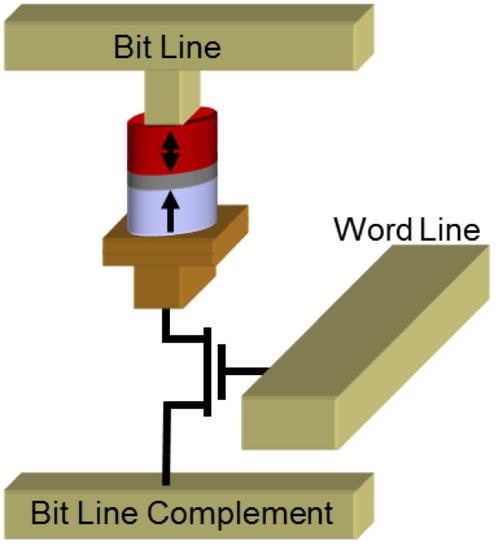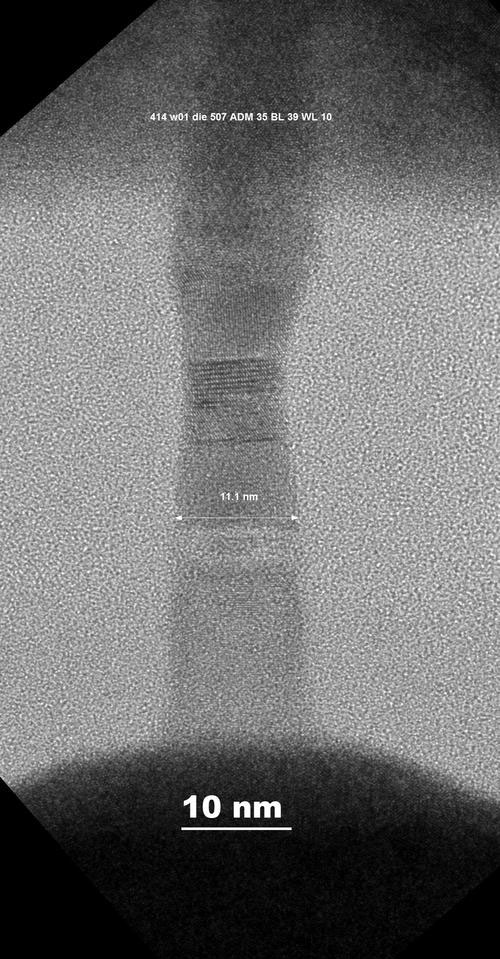OOPS! You forgot to upload swfobject.js ! You must upload this file for your form to work.
IBM and Samsung have reported the development of 11-nm memory STT MRAM
![]()
|
xtreview is your : Video card - cpu - memory - Hard drive - power supply unit source |
|
|||
|
|
||||
 Recommended : Free unlimited image hosting with image editor
Recommended : Free unlimited image hosting with image editor
|
POSTER: computer news || IBM AND SAMSUNG HAVE REPORTED THE DEVELOPMENT OF 11-NM MEMORY STT MRAM |
DATE:2016-07-08 |
|
|
Yesterday, IBM celebrated its 20th anniversary in the development of the non-volatile recording method as magnetoresistive random access memory (MRAM). The start was with the control unit via an electromagnetic field, and resulted in the creation of cell recording using the torque transmission electron spin - STT MRAM (spin-transfer torque MRAM). During this time, IBM has collaborated with many companies. The first experiments began with Motorola company . Then there were Infineon, TDK, and Micron. By the end of development IBM researchers came up with Samsung's engineers, and the 20-year anniversary is celebrated on the stage close to the preparation of development to commercial launch. Completion of the translation memory production STT MRAM commercialization is expected in three years. Processes optimization of materials and other engineering stuff now running. The crucial achievement was the cell structure of the transfer from horizontal to vertical, with what may have helped the Samsung company, as the undisputed leader in the development of a multi-layer memory 3D NAND. The prototype has a memory STT MRAM cell with a working part of 11 nm in diameter, and the first phase will be carried out using the 10-nm process technology.  Experimental Study of memory performance suggests superior speed parameters at the level of 10 ns access rate. This is much closer to the DRAM memory than the NAND-flash. RAM in total non-volatile memory STT MRAM is no substitute, but as a built-in memory, the solution almost infinite resource to overwrite - it will be a breakthrough.  Depending on the direction of magnetic field with variable magnetisation zone cell will store a "0" or "1". Writing a value, as already mentioned above, the effect occurs via electron tunneling junction with spin transfer zone in a variable magnetization. Add, STT MRAM memory is also developing other companies, in particular - Toshiba company . So IBM and Samsung may not be first to begin commercial production of STT MRAM.
Related Products : | ||
|
|
||
|
xtreview is your : Video card - cpu - memory - Hard drive - power supply unit source |
|
|
|
|
||
|
Xtreview Support  N-Post:xxxx Xtreview Support        |
IBM AND SAMSUNG HAVE REPORTED THE DEVELOPMENT OF 11-NM MEMORY STT MRAM |
| Please Feel Free to write any Comment; Thanks  |
Radeon RX Vega 57, 58 and 59: the wonders of transformation (2017-09-07)
Meizu will release Android-smartphone based on Helio P40 (2017-09-07)
Lenovo released Android-smartphone K8 (2017-09-07)
Panasonic P9 a new Android-smartphone entry-level (2017-09-07)
Huawei overtook Apple and became the second largest smartphone manufacturer in the world (2017-09-07)
China banned the creation of new ICO crypto-currency and ordered to return the money for the created one (2017-09-06)
Vivo X20 and X20A certified by TENAA (2017-09-06)
Budget Android-smartphone Xiaomi certified in China (2017-09-06)
Lenovo K8 Note with a dual camera and a 4000 mAh battery (2017-09-06)
Xbox One will get keyboard and mouse support (2017-09-05)
AMD processors with Zen architecture of the second generation will raise frequencies and specific performance (2017-09-05)
Samsung has released an Android-smartphone Galaxy J7 plus with a dual camera (2017-09-04)
MediaTek announces 8-core 16-nm mobile chips Helio P23 and Helio P30 (2017-08-30)
Specifications PCIe 4.0 will see the light this year, and PCIe 5.0 in 2019 (2017-08-30)
Samsung expects to sell more than 11 million Android-smartphones Galaxy Note 8 (2017-08-29)
Not more than half of Germans and Americans are ready to use robotic vehicles (2017-08-28)
The code name of the Android-smartphone Huawei Mate 10 (2017-08-28)
New photos of Android-smartphone LG V30 (2017-08-28)
The decision on the transaction between WDC and Toshiba can be made on August 31 (2017-08-27)
Core i9-7960X and Cinebench R15 record now at 5639 MHz (2017-08-27)
![]()
To figure out your best laptops .Welcome to XTreview.com. Here u can find a complete computer hardware guide and laptop rating .More than 500 reviews of modern PC to understand the basic architecture


7600gt review
7600gt is the middle card range.
We already benchmarked this video card and found that ...

 geforce 8800gtx and 8800gts
geforce 8800gtx and 8800gts  Xtreview software download Section
Xtreview software download Section  AMD TURION 64 X2 REVIEW
AMD TURION 64 X2 REVIEW  INTEL PENTIUM D 920 , INTEL PENTIUM D 930
INTEL PENTIUM D 920 , INTEL PENTIUM D 930  6800XT REVIEW
6800XT REVIEW  computer hardware REVIEW
computer hardware REVIEW  INTEL CONROE CORE DUO 2 REVIEW VS AMD AM2
INTEL CONROE CORE DUO 2 REVIEW VS AMD AM2  INTEL PENTIUM D 805 INTEL D805
INTEL PENTIUM D 805 INTEL D805  Free desktop wallpaper
Free desktop wallpaper  online fighting game
online fighting game  Xtreview price comparison center
Xtreview price comparison center Lastest 15 Reviews


Rss Feeds
Last News
- The new version of GPU-Z finally kills the belief in the miracle of Vega transformation
- The motherboard manufacturer confirms the characteristics of the processors Coffee Lake
- We are looking for copper coolers on NVIDIA Volta computing accelerators
- Unofficially about Intels plans to release 300-series chipset
- The Japanese representation of AMD offered monetary compensation to the first buyers of Ryzen Threadripper
- This year will not be released more than 45 million motherboards
- TSMC denies the presentation of charges from the antimonopoly authorities
- Radeon RX Vega 64 at frequencies 1802-1000 MHz updated the record GPUPI 1B
- AMD itself would like to believe that mobile processors Ryzen have already been released
- AMD Vega 20 will find application in accelerating computations
- Pre-orders for new iPhone start next week
- Radeon RX Vega 57, 58 and 59: the wonders of transformation
- ASML starts commercial delivery of EUV-scanners
- The older Skylake processors with a free multiplier are removed from production
- Meizu will release Android-smartphone based on Helio P40
- AMD Bristol Ridge processors are also available in American retail
- The fate of Toshiba Memory can be solved to the next environment
- duo GeForce GTX 1080 Ti in GPUPI 1B at frequencies of 2480-10320 MHz
- New Kentsfield overclocking record up to 5204 MHz
- Lenovo released Android-smartphone K8

HALO 3 HALO 3 - Final Fight!

PREY Prey is something you don t often see anymore: a totally unigue shooter experience.

computer news computer parts review Old Forum Downloads New Forum Login Join Articles terms Hardware blog Sitemap Get Freebies


